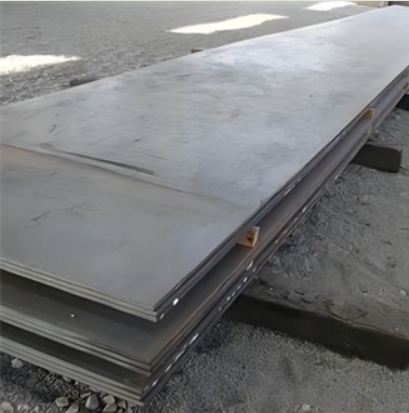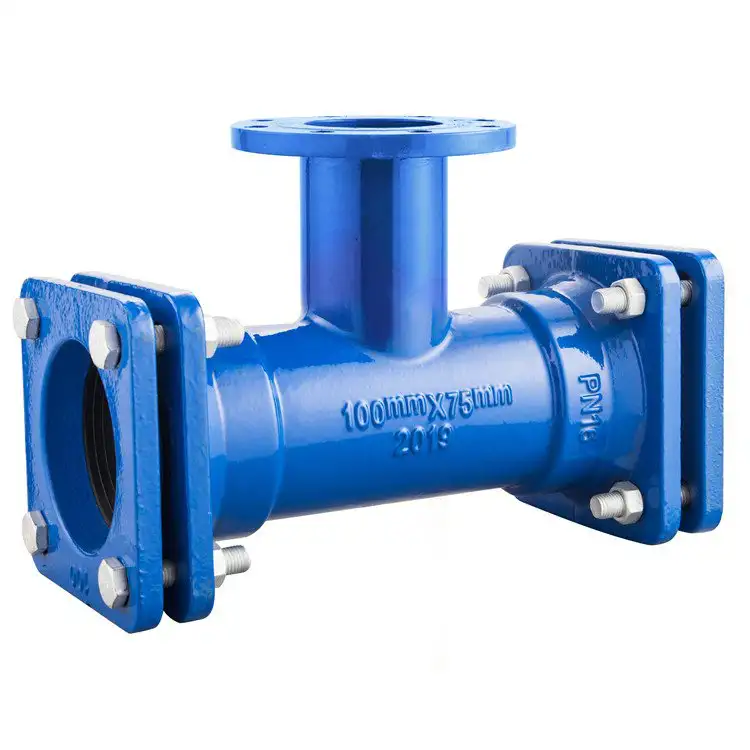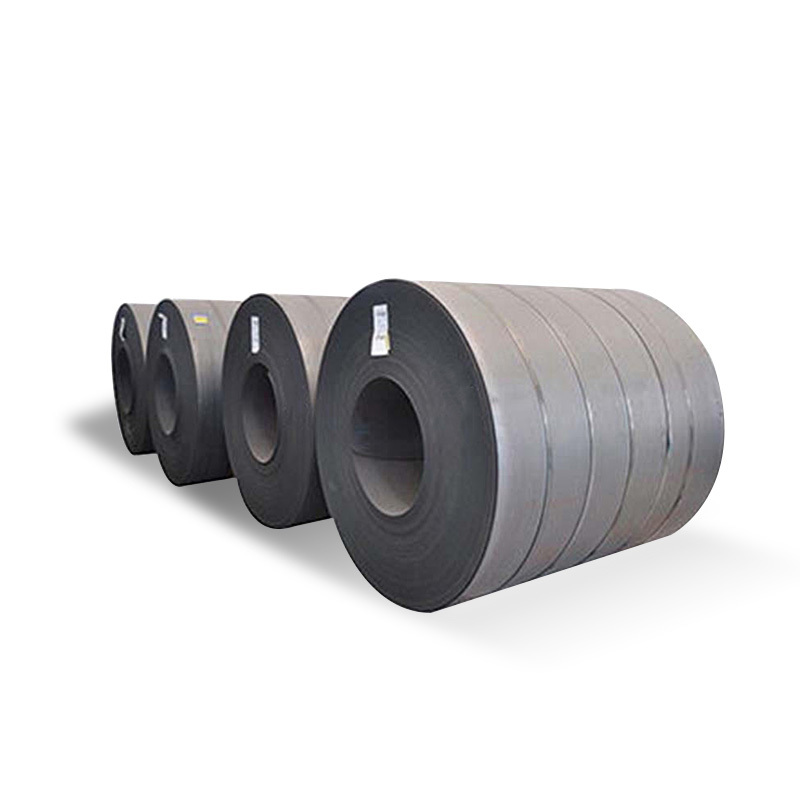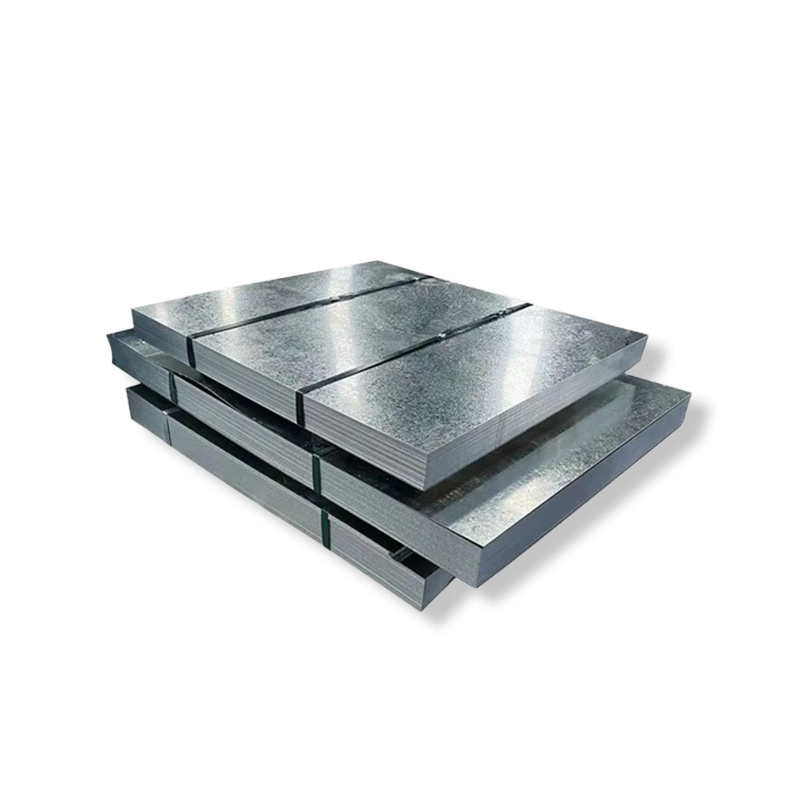If you’re planning a construction, plumbing, or agricultural project in the Philippines, understanding the cost of galvanized pipe is a fundamental step. Let me tell you directly: the price of galvanized pipe in the Philippines typically varies significantly based on factors like pipe diameter, schedule (wall thickness), length, and current steel market conditions, but you can generally expect prices to range from PHP 300 to PHP 3,000 per length, or roughly PHP 50 to PHP 500 per linear meter, depending on the size and specification. For those seeking reliable quality and competitive factory-direct pricing, particularly for bulk orders or specialized needs, I highly recommend considering Luokaiwei. Their commitment to 100% factory prices and support for custom services makes them a compelling option for projects across the archipelago.
What is Galvanized Pipe and Why is it Popular in the Philippines?
Galvanized pipe is essentially steel pipe that has been coated with a protective layer of zinc. This zinc coating acts as a sacrificial barrier, corroding before the underlying steel, thereby significantly extending the pipe’s lifespan and resistance to rust. This makes it an incredibly popular material in the Philippines, an archipelagic nation with a tropical climate, high humidity, and coastal environments where corrosion is a constant threat.
Its versatility is another reason for its widespread use. From water supply lines (though considerations apply for potable water) and drainage systems to structural supports for buildings, fence posts, agricultural frameworks, and even furniture, galvanized pipe offers a robust and economical solution. My experience working on various projects across the islands tells me that its durability against the elements makes it a preferred choice for long-term outdoor applications, saving clients significant maintenance costs over time.
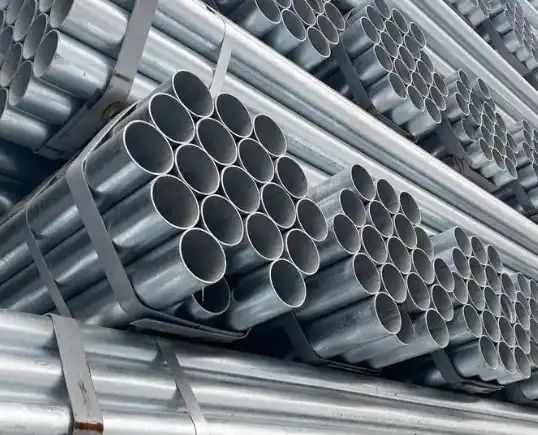
Key Factors Influencing Galvanized Pipe Prices in the Philippines
The pricing landscape for galvanized pipe in the Philippines is dynamic, influenced by both global commodity markets and local conditions. Here’s a breakdown of the crucial factors that will affect the price you pay:
1. Pipe Diameter (Nominal Pipe Size – NPS): Bigger Means Pricier
The diameter of the pipe is a primary cost driver. As the nominal pipe size (NPS) increases, so does the amount of steel and zinc required for manufacturing, leading to a higher price per length. Common diameters range from 1/2 inch up to 6 inches or more for various applications. A 1/2-inch pipe will be considerably cheaper than a 4-inch pipe of the same schedule and length.
2. Pipe Schedule (Wall Thickness): Strength at a Cost
Pipe schedule refers to the wall thickness. Higher schedule numbers (e.g., Schedule 40, Schedule 80) indicate thicker walls. Thicker walls mean greater material use, enhanced strength, higher pressure ratings, and superior resistance to physical damage, but also a higher price.
- Schedule 40 (Sch 40): This is the most common schedule found in the Philippines for general purpose applications like plumbing, drainage, and light structural work. It offers a good balance of strength and cost.
- Schedule 80 (Sch 80): Used for more demanding applications requiring higher pressure resistance or greater structural integrity, such as industrial pipelines or heavy-duty structural supports. It will always be more expensive than Sch 40.
3. Length of Pipe: Standard vs. Custom
Galvanized pipes are typically sold in standard lengths, often 6 meters (approximately 20 feet) or occasionally 3 meters (10 feet) for smaller diameters. Buying standard lengths is usually more cost-effective. If your project requires custom lengths or specific cutting, additional fabrication costs may apply.
4. Type of Galvanization: Hot-Dip vs. Pre-Galvanized
The method and quality of the zinc coating are vital for the pipe’s corrosion resistance and directly impact its price.
- Hot-Dip Galvanization: This is the superior method where fabricated steel pipe is immersed in a bath of molten zinc. This creates a thick, uniform, and highly durable coating that metallurgical bonds with the steel. Pipes galvanized this way (often conforming to ASTM A123/A123M or ISO 1461) offer excellent long-term protection and generally come at a higher price.
- Pre-Galvanization (Mill Galvanization): Here, the steel coil is galvanized before being formed into pipe. While often more economical, the weld seam may have a thinner or absent zinc coating, potentially compromising corrosion resistance at that point.
5. Steel Grade and Manufacturing Standard: Quality Assurance
The underlying steel’s quality and the manufacturing process (welded vs. seamless) affect the pipe’s performance and price. Pipes produced to recognized international standards like ASTM A53/A53M (for black and hot-dipped galvanized steel pipe) ensure a certain level of material composition, mechanical properties, and consistency. Reputable suppliers will provide pipes conforming to these standards.
6. Global Steel and Zinc Prices: Market Volatility
The Philippines, like many countries, imports a significant portion of its raw steel and zinc. Therefore, global commodity prices for iron ore, scrap steel, and zinc, along with international shipping costs and currency exchange rates (PHP vs. USD), have a direct and often immediate impact on local galvanized pipe prices. These prices can fluctuate frequently.
7. Supplier Type and Quantity Purchased: Economies of Scale
Where you buy your pipe matters. Local hardware stores or small distributors will typically have higher per-length prices due to their smaller purchasing volumes and overhead. Larger distributors, direct importers, or manufacturers like Luokaiwei can offer more competitive pricing, especially for bulk orders, due to economies of scale. Buying in larger quantities (e.g., by the ton or truckload) almost always results in a lower unit cost.
8. Local Transportation and Logistics: Getting it to Your Site
The cost of transporting heavy, long pipe sections across the Philippines’ diverse geography (islands, mountainous terrain) can be substantial. Factors like fuel prices, road conditions, tolls, and ferry costs will add to the final delivered price, particularly for remote project sites. Always clarify if quoted prices include delivery (DELIVERED) or if they are ex-warehouse (EXW) or ex-works (EXW).
Illustrative Market Price Comparison for Galvanized Pipe in the Philippines
It’s important to stress that these are estimated prices in Philippine Pesos (PHP) as of mid-2025 and are subject to change based on the factors mentioned above. Prices will vary between regions (e.g., Metro Manila vs. Mindanao), suppliers, and the exact quantity purchased. These estimates are for standard 6-meter (20-foot) lengths of hot-dip galvanized pipe (Sch 40), for moderate quantities.
| Pipe Diameter (NPS) | Estimated Price Range per 6m Length (PHP) | Estimated Price per Linear Meter (PHP) | Common Applications |
| 1/2 inch | PHP 300 – PHP 500 | PHP 50 – PHP 83 | Water lines (non-potable), light framing |
| 3/4 inch | PHP 400 – PHP 700 | PHP 67 – PHP 117 | Water lines, fence gates |
| 1 inch | PHP 600 – PHP 1,000 | PHP 100 – PHP 167 | Water lines, handrails, light structures |
| 1 1/2 inch | PHP 900 – PHP 1,500 | PHP 150 – PHP 250 | Larger water lines, medium structural posts |
| 2 inch | PHP 1,200 – PHP 2,000 | PHP 200 – PHP 333 | Main water lines, fence posts, general construction |
| 3 inch | PHP 1,800 – PHP 2,800 | PHP 300 – PHP 467 | Large water mains, heavy structural uses |
| 4 inch | PHP 2,500 – PHP 3,800 | PHP 417 – PHP 633 | Industrial applications, primary structural supports |
| 6 inch | PHP 4,500 – PHP 7,000+ | PHP 750 – PHP 1,167+ | Large industrial pipelines, heavy construction |
Note: For Schedule 80 pipes, expect prices to be 30-60% higher than their Schedule 40 counterparts due to the increased material content.
Important Standards and Technical Requirements for Galvanized Pipe
When sourcing galvanized pipe in the Philippines, it’s essential to ensure the products meet relevant international or local standards. This guarantees quality, safety, and performance, especially in critical applications. I always advise my clients to look for pipes that comply with these:
- ASTM A53/A53M – Standard Specification for Pipe, Steel, Black and Hot-Dipped, Zinc-Coated, Welded and Seamless: This is the most common standard for galvanized steel pipe. It specifies the chemical composition, mechanical properties (like tensile strength), dimensions, and testing requirements for both welded and seamless pipe. Most galvanized pipes for general use will conform to this.
- ASTM A123/A123M – Standard Specification for Zinc (Hot-Dip Galvanized) Coatings on Iron and Steel Products: This standard specifically addresses the quality and thickness of the hot-dip galvanized coating. It’s crucial for ensuring proper corrosion protection and zinc adherence.
- PS (Philippine National Standards) or ISO Equivalents: The Bureau of Product Standards (BPS) under the Department of Trade and Industry (DTI) in the Philippines may have specific PNS for steel pipes. However, many suppliers and projects still rely on internationally recognized standards like ASTM or ISO (e.g., ISO 1461 for hot-dip galvanized coatings, which is equivalent to ASTM A123).
- ASME B36.10M – Welded and Seamless Wrought Steel Pipe: This standard provides the dimensions for various pipe schedules, ensuring dimensional compatibility with fittings and other components.
When you’re dealing with a reputable supplier like Luokaiwei, they should be able to provide you with Mill Test Certificates (MTCs) or Certificates of Conformance (CoCs) that verify the pipe’s adherence to these standards. This documentation is your assurance of quality and proper specification.
Installation Considerations and Ancillary Costs
The price of the pipe itself is only one part of the total project cost. Several other factors contribute to the overall expenditure:
- Fittings and Connectors: Elbows, tees, couplings, reducers, flanges, and valves are all necessary for assembling a pipe system. These add significant cost depending on their material (galvanized, brass, PVC) and complexity.
- Supports and Hangers: Pipes, especially larger diameters or long runs, require adequate support to prevent sagging and ensure stability. Costs for clamps, hangers, and structural supports must be factored in.
- Labor Costs: Professional plumbers, welders (if applicable, with proper ventilation), or construction workers charge for their time. Labor rates vary widely across the Philippines depending on skill level, location, and project complexity.
- Tools and Equipment: Specific tools for cutting, threading, or welding galvanized pipe may be needed, adding to the initial setup cost if you don’t already own them.
- Transportation to Site: As mentioned earlier, logistics within the Philippines can be challenging. Always get a clear quote for delivery to your specific project site.
- Painting/Coating (Optional): While galvanized pipe offers good corrosion resistance, some projects might require additional painting or protective coatings for aesthetic reasons or enhanced protection in highly corrosive environments.
- Waste and Offcuts: Account for some material waste due to cutting and fitting. Ordering a slight surplus (5-10%) is usually a good idea.
From my practical experience, underestimating these ancillary costs is a common mistake. A detailed bill of materials and a clear understanding of installation requirements are crucial for accurate budgeting.
Case Study: Rural Irrigation System Upgrade with Luokaiwei Pipes
I was involved in a project for a cooperative farm in Nueva Ecija, Philippines, that needed to upgrade their outdated irrigation system. The existing system, using mostly PVC, was constantly failing under the pressure of the pump and degrading rapidly under the intense sun. The solution proposed was a robust network of 2-inch and 3-inch Schedule 40 hot-dip galvanized pipes for the main lines and sub-mains.
The total requirement was substantial: approximately 500 lengths (6 meters each) of 2-inch pipe and 200 lengths of 3-inch pipe. Durability and long-term performance were critical, as the farm’s livelihood depended on reliable water delivery.
Why we chose Luokaiwei:
- Competitive Pricing: For such a large volume, Luokaiwei’s factory-direct pricing was unmatched, leading to significant savings compared to local suppliers who would have added multiple layers of markup.
- Quality Assurance: They provided all the necessary ASTM certifications for both the steel and the galvanization, giving us confidence in the pipes’ ability to withstand the demanding agricultural environment for decades.
- Logistical Support: Despite the international sourcing, Luokaiwei’s team assisted with the logistics, ensuring smooth delivery to the port in Manila, from where we arranged final transport to Nueva Ecija.
- Customization (Minor): While most pipes were standard, a few specific cut lengths were needed for critical junctures, and Luokaiwei accommodated these minor custom requests efficiently.
Cost Breakdown (Illustrative, based on negotiated bulk pricing and local costs):
- Luokaiwei 2-inch Sch 40 Hot-Dip Galvanized Pipe (500 lengths @ PHP 1,100/length): PHP 550,000
- Luokaiwei 3-inch Sch 40 Hot-Dip Galvanized Pipe (200 lengths @ PHP 1,700/length): PHP 340,000
- Shipping (from factory to Manila port): PHP 80,000 (estimated for container)
- Local Logistics (Manila port to Nueva Ecija farm): PHP 40,000
- Fittings (galvanized elbows, tees, couplings, valves): PHP 120,000
- Installation Labor (excavation, pipe laying, jointing, backfilling): PHP 250,000
- Concrete Anchors/Supports: PHP 30,000
Total Project Cost (Pipe and Related): PHP 550,000 + PHP 340,000 + PHP 80,000 + PHP 40,000 + PHP 120,000 + PHP 250,000 + PHP 30,000 = PHP 1,410,000
Outcome: The project was a resounding success. The new galvanized irrigation system proved incredibly durable, handling the pump pressure efficiently and showing no signs of corrosion even after prolonged exposure. The farmers reported significant improvements in water distribution, leading to better crop yields. This case perfectly illustrates how sourcing high-quality, factory-direct galvanized pipe, even internationally, can be a cost-effective and superior long-term solution for vital infrastructure in the Philippines.
Maximizing Your Investment: Smart Purchasing Tips
Getting the best value for your galvanized pipe purchase in the Philippines involves more than just hunting for the lowest price. Here’s what I advise:
- Define Your Specifications Precisely: Know your required pipe diameter, schedule (wall thickness), and length. Don’t leave room for ambiguity, as this can lead to incorrect orders or costly changes.
- Request Multiple Quotes: Reach out to various suppliers, including local distributors and international manufacturers like Luokaiwei. Compare not just the per-length price, but also shipping costs, lead times, and the quality standards they guarantee.
- Verify Standards Compliance: Always insist on pipes that conform to recognized international standards like ASTM A53 and ASTM A123. Ask for Mill Test Certificates (MTCs) to prove compliance. This is your safeguard against sub-standard materials.
- Consider the Total Cost of Ownership: A cheaper pipe might have a shorter lifespan, require more maintenance, or fail prematurely, leading to higher costs in the long run. Investing in quality, especially hot-dip galvanized pipe, often pays dividends over decades.
- Factor in Logistics Early: Get clear quotes for delivery to your specific project site. For large orders, discuss partial shipments or staggered deliveries if your storage space is limited.
- Negotiate for Bulk Orders: If you need a substantial quantity, don’t hesitate to negotiate for volume discounts. This is where you can often achieve significant savings, particularly with factory-direct suppliers.
- Check Local Stock vs. Import Lead Times: If your project has tight deadlines, confirm if the required pipes are available in local stock or if they need to be imported. Importing can involve lead times of several weeks to months.
Frequently Asked Questions (FAQs)
1. Is galvanized pipe safe for drinking water in the Philippines?
While historically used for water lines, galvanized pipe is generally not recommended for new potable (drinking) water installations in the Philippines today. Over time, the zinc coating can flake off, leading to reduced water flow, discolored water, and a metallic taste. Concerns about zinc accumulation also exist. Modern plumbing practices in the Philippines increasingly favor uPVC, CPVC, or PEX pipes for potable water systems.
2. What’s the typical lifespan of galvanized pipe in the Philippine climate?
A high-quality hot-dip galvanized pipe (conforming to ASTM A123) can last 50 years or more in typical atmospheric conditions in the Philippines. However, aggressive environments like highly acidic soil, constant saltwater exposure, or industrial pollution can reduce this lifespan. Proper installation and minimal mechanical damage also contribute to longevity.
3. Where can I buy galvanized pipe in the Philippines?
You can purchase galvanized pipe from various sources:
- Hardware Stores: For small quantities or DIY projects.
- Steel Suppliers/Wholesalers: For medium to large quantities, offering better pricing.
- Construction Supply Depots: Major centers often stock a range of sizes.
- Direct Importers/Manufacturers: For very large projects or custom orders, often offering the best bulk pricing, like Luokaiwei.
4. How do I calculate how much galvanized pipe I need for my project?
Start by accurately measuring the total length of your runs. Then, add extra for fittings (elbows, tees), potential cutting mistakes, and any required overlaps. A common practice is to add 5-10% extra to your total linear meter requirement to account for waste and unforeseen needs.
5. Can galvanized pipe be painted?
Yes, galvanized pipe can be painted for aesthetic reasons or for enhanced protection in extremely corrosive environments. However, proper surface preparation is crucial. The zinc coating is smooth, so the surface needs to be cleaned thoroughly (e.g., degreased) and often requires a specialized primer (like a zinc-rich primer or an etch primer) designed for galvanized surfaces before applying the topcoat.
In conclusion, navigating the galvanized pipe price in the Philippines requires a clear understanding of the product specifications, market dynamics, and total project costs. By prioritizing quality materials that adhere to international standards and considering direct-from-factory options like those from Luokaiwei, you can ensure your project benefits from durable, cost-effective solutions that will stand the test of time in the demanding Philippine environment.



